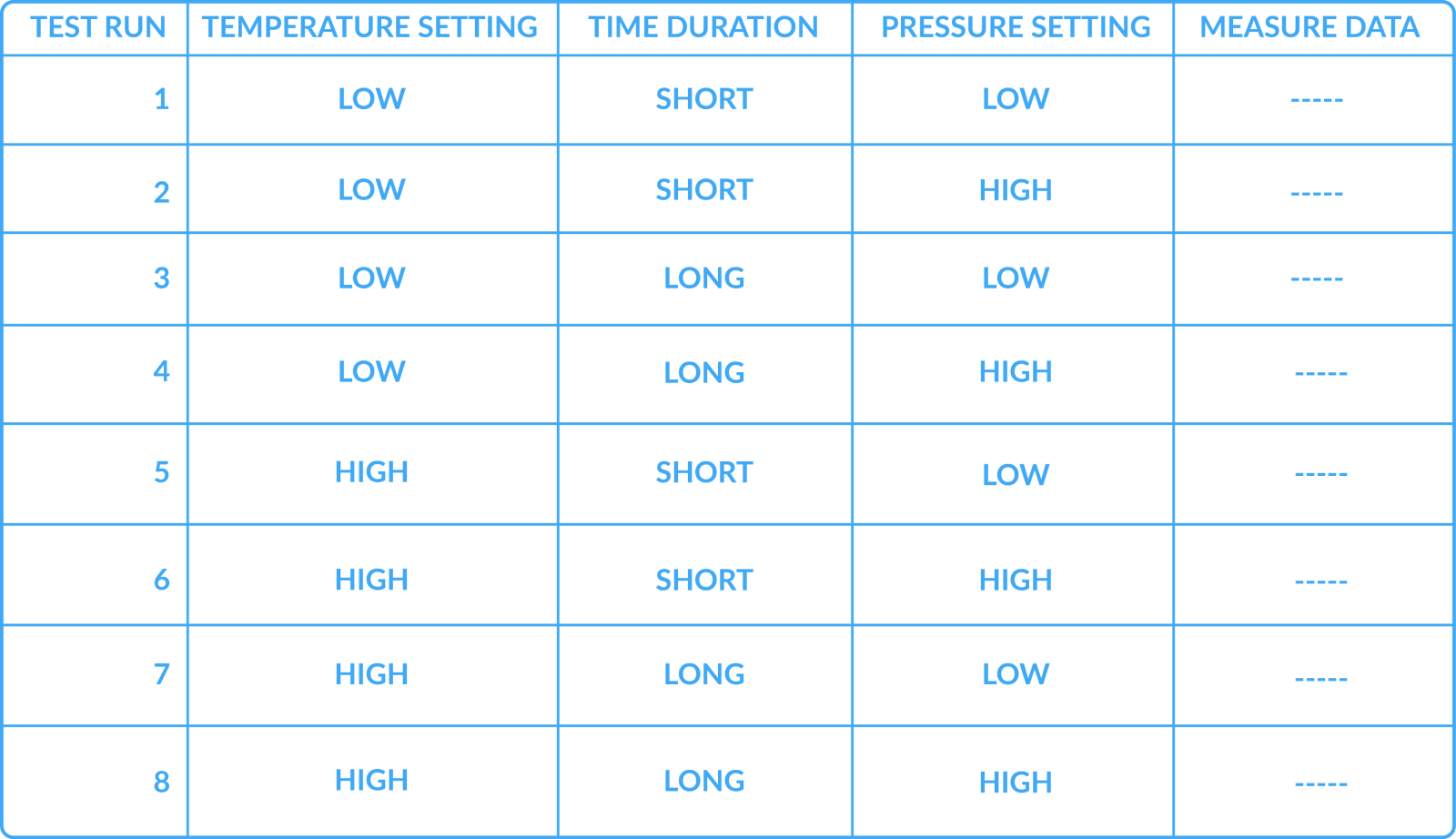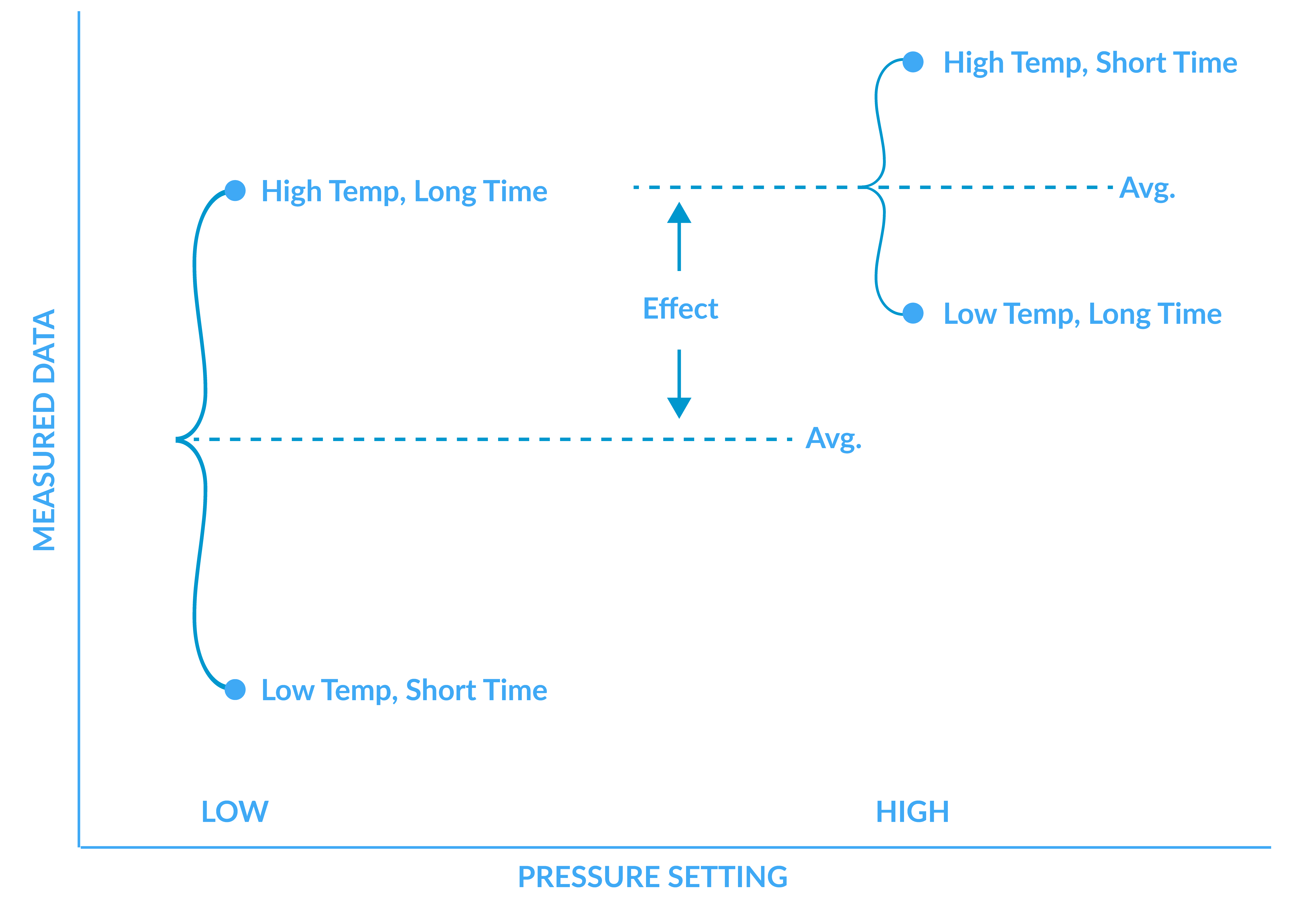实验设计
BETE Spray Laboratory
Design of Experiments
Design of Experiments is a methodology to plan experiments that extract the most information from the smallest number of tests. Consider a simple example of evaluating the effect of three factors, say temperature, time, and pressure, on a process. You've decided to test two levels of each factor, for example, a high temperature and a low temperature.

You can use this data to see if the temperature has an effect by comparing the data from run 2 to run 1, ignoring the data from runs 3 and 4. To assess the impact of duration, you compare the data from run 3 to run 1. Doing this is valid, but you use only half the available data in making your decisions for each effect.

评估建立的影响ure from this data, you could compare the data average from runs 5-8 to runs 1-4.

This group of tests represents a "half factorial" experiment, running only half of the possible combinations. When analyzing the data from such an experiment, you compare all the tests done at a low factor setting with those done at a high factor setting.
For example, to see if the pressure has an effect, you compare the data average for runs 1 and 4 against runs 2 and 3. These two groups have data from both temperature settings and time durations, so it is a fair comparison. The data for pressure might look like the following, and from this graph, we could conclude that an increase in pressure results in a larger value of the measured parameter.










